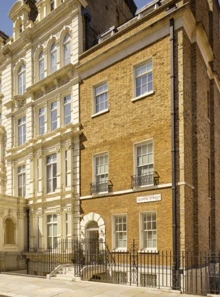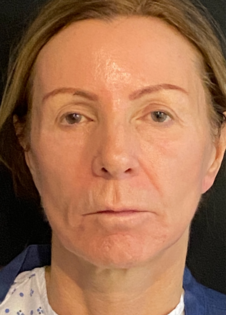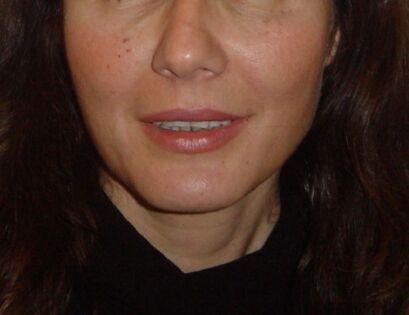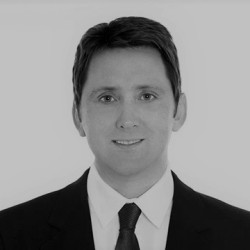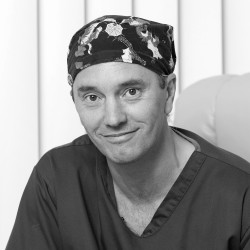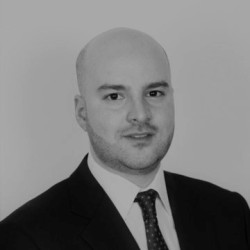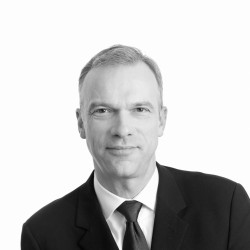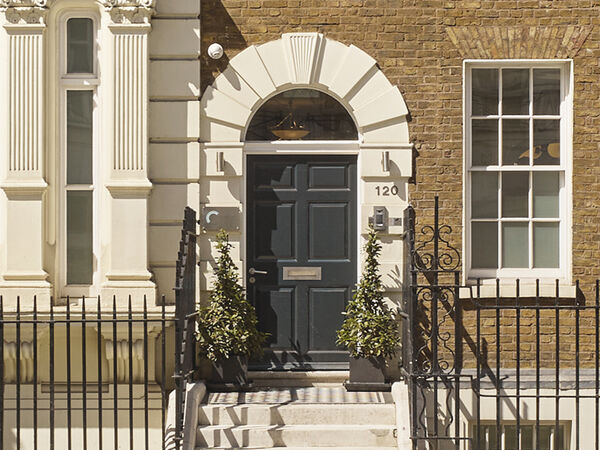Medically Reviewed 15 February 2024,
by Mr. Bryan Mayou (GMC: 1414396) - founder of the Cadogan Clinic and one of the world's leading plastic surgeons
What is Fat Transfer to Face?
Fat transfer to face, also referred to as facial fat grafting or facial fat transfer, is a surgical treatment involving fat being extracted from the body, being processed and then reinjected into the fat. This restores volume that has been lost through the ageing process, resulting in a rejuvenated appearance.
As we age, the building blocks of our skin, collagen and elastin, begin to break down. This leads to the skin losing its natural elasticity, causing it to wrinkle and sag. Facial fat grafting is an effective, long-term treatment, which restores youthful volume and contours, without the need for dermal fillers.
London fat transfer to the face can be combined with other procedures, such as a facelift, a neck lift, or blepharoplasty to enhance the overall result.
Get in touch
Fat Transfer to Face At a glance
Surgery Time
30 - 45 minutes
Time off work
a few days (if needed)
Hospital Stay
1 to 2 hours
Reasonable Mobility
Immediately
Sexual Activity
After a few days
Why do people have facial fat transfer surgery?
As we age, our skin begins to lose elasticity, causing wrinkles and sagging. Many patients feel this leaves them looking unapproachable or sad, with a more closed appearance. While non-surgical options such as dermal fillers provide a temporary solution, usually lasting around 6-18 months, fat transfer to cheeks or lips has a much longer lasting result. Dermal fillers are also associated with an unnatural result which can be caused by fluid retention and migration. In comparison, fat transfer leaves a highly natural result as the fat organically integrates with your body’s tissues.
Patients find that their faces appear more lifted and smoother as well as reporting an improvement in the quality of the overlying skin, caused by using their own fat and stem cells as part of the treatment. Results can be seen in our fat transfer to face before and after gallery.
Who is suitable for facial fat transfer?
Our specialist consultant surgeons will assess whether you are suitable for face fat transfer in an in-person one-to one-consultation.
Your surgeon will examine the areas you would like to remove fat from, typically the abdomen, flanks and thighs, and the areas of your face you would like to treat. This is to ensure you have enough fat to be extracted and injected and that your concerns can be treated effectively with fat grafting. It is also important you have realistic expectations for the results that can be achieved. They will conduct a general physical and mental health assessment to make sure you are suitable for a general anaesthetic or sedation procedure - this will include your height, weight and blood pressure. You must be over 18 to undergo Fat Transfer procedures.
You may be a good fit for facial fat transfer if:
- You are over the age of 18.
- You are in good psychological and physical medical health
- You are at your ideal body weight
- You have a positive outlook and realistic expectations of what can be achieved via fat transfer
- You are seeking to improve the contours of your face
- You are seeking to rejuvenate the appearance of your overlying facial skin
- You are seeking to reduce fine lines and wrinkles
- You are looking for longer lasting results that can be achieved by dermal filler
The cost of Fat Transfer to Face
Cadogan Clinic has collaborated with Chrysalis Finance to offer a variety of payment choices for our patients including:
6 months 0% Interest-free - APR
12 - 60 months at 14.9% APR
Flexible Finance
Included in this treatment
Up to two 60 minute consultations with a leading specialist plastic surgeon at our award-winning premises in Chelsea
Your procedure carried out at London’s leading specialist cosmetic surgery centre of excellence
24/7 on call nurse assistance
Dedicated Patient Co-ordinator, as a personal point of contact through your journey with Cadogan
A pre-operative medical assessment to ensure you are fit for surgery
Comprehensive post-operative aftercare courtesy of our specialist cosmetic nurses
What is involved in fat transfer to the face?
Fat transfer to face is a surgical procedure performed under general anaesthetic meaning you are completely asleep, or sedation, meaning you are awake but have little memory of the procedure afterwards.
Fat transfer to face involves three stages. First, unwanted or excess fat is extracted from the body using liposuction. Your surgeon will usually recommend areas such as your abdomen, hips and thighs.
Secondly, the extracted fat cells are then cleansed and processed in a centrifuge to remove any impurities. This stage is important to ensure the best results, and chance of the fat being accepted in the face.
Finally, your surgeon will inject the treated fat back into your face, targeting your areas of concern.
When performed as a standalone procedure, facial fat grafting takes 1-2 hours to complete. This time may vary if your surgeon has recommended other surgical procedures to be undertaken at the same time.
What areas of the face can be treated with Fat Transfer?
It is worth considering having Fat Transfer to Face if you are already having liposuction to sculpt and contour other parts of the body, such as the stomach or thighs. This means the excess fat which has been extracted can be used rather than discarded after liposuction. Patients of all ages can benefit from Fat Transfer to Face due to its skin rejuvenating properties.
Fine lines, wrinkles, and skin ageing
Fat Transfer to the Face effectively addresses common signs of facial ageing, including fine lines and frown lines around the mouth, nose, and eyes. The procedure will leave a gaunt and tired face with expression lines looking fresh, plump and rejuvenated by restoring volume and improving skin quality.
Facial structure in the cheeks, temples, and jawline
Sunken cheeks, temples and forehead along with a softened jaw line are a common result of ageing, caused by the natural breakdown of the fat pads and bone structures in the face. Fat transfer for cheeks and other areas of the face will restore the facial structure associated with youth.
Lifting the eyebrows
Fat transferred under the eyebrows will lift the brows and the upper eyelids, resulting in a more youthful, wide-eyed look. This is often combined with blepharoplasty to enhance the overall result.
Fuller looking lips
Fat transfer to lips can be used as a more permanent solution to dermal lip fillers. Fat is taken from a deposit on your body and reintroduced to your lips, helping to plump thinning or ageing lips. This treatment doesn't only need to be for providing volume, but it can also be used to accentuate the lip borders and help the lips not look so thin or sunken. This procures different results to a surgical lip lift, which your surgeon can talk through with you.
Fat Transfer Surgeons
We have invited a selection of the country's very best consultants to join us at the Cadogan Clinic so that you can be sure that whatever the nature of your treatment, you will be seeing one of the top practitioners in the country.
What to expect
When you choose to undergo fat transfer to face at Cadogan Clinic, what can you expect from your procedure and how will you be asked to prepare?
01.The consultation
Your patient advisor will recommend the best surgeon for you based on your concerns and desired results. They will schedule up to two consultations for you, which will each be between 30 and 60 minutes. You will get to meet with your surgeon and discuss the fat transfer procedure, recovery, and the results that are possible for you.
Our surgeons recommend preparing for your consultation by writing down any questions you have in advance - even if you think you know the answer. This means you can use the time effectively, get the most from your consultation, and find the reassurance you need.
Your surgeon will complete your medical file by taking any necessary measurements and 'before' photos, as well as conducting a health and wellness check to ensure you are suitable for surgery.
After your consultation, your surgeon will send your notes through to your patient advisor, who will contact you to discuss the proposed plan. They will go over the procedure your surgeon has suggested for you, as well as the price and some available dates, to allow you to put down a deposit. You will then have a mandatory two week cooling off period, to consider whether facial fat transfer is the right choice for you.
02.Leading up to procedure
If you decide to go ahead with your facial fat transfer London procedure, you will be sent a set of instructions with your confirmation pack.
- You will be sent a medical and psychological questionnaire to be completed in the run up to your surgery. Your surgeon and anaesthetist will review these to confirm you are ready for surgery.
- You will be asked to stop smoking and vaping in the six weeks before your procedure to ensure you heal and recover properly.
- You may be asked to cut down on your alcohol consumption throughout your preparation and you shouldn’t drink any alcohol in the 48 hours before your surgery.
- For 7 days before your surgery, avoid taking medications such as ibuprofen and aspirin, or herbal supplements as these can increase the risk of bleeding.
- You will need to organise a chaperone to accompany you after your facial fat transfer procedure. This should be a family member or friend who can either drive you or accompany you in a taxi and stay with you overnight.
- For all general anaesthetic and sedation procedures, you will be required to fast. Please do not consume any solid food, juice or milk in the six hours before you arrive at the clinic, and only have sips of clear liquids (water, black tea or black coffee) between 6 and 2 hours before you arrive at the clinic. You mustn’t have anything to eat or drink in the final 2 hours before you arrive.
03.On the day
You will be asked to arrive at the clinic an hour before your surgery is scheduled to begin. Our nurses will prepare you for your procedure by checking your vital health signs, and asking you to change into a surgical gown and compression stockings. Your surgeon will then come to greet you and answer any questions you have before making any markings they need to perform the surgery, and taking you into the theatre.
Once you are settled in the theatre, your anaesthetist will administer your general anaesthetic or sedation. All procedures at Cadogan Clinic are carried out using TIVA (Total Intravenous Anaesthesia) which has a faster initial recovery time and is less likely to make you feel sick when you wake up.
Once your facial fat transfer procedure is completed, you will wake up in our recovery ward, where a nurse will monitor your vital health signs, while you make yourself comfortable. You will be taken into our ambulatory ward where you will have something to eat and drink and the nurses will prepare you for discharge. When you are ready, the nurses will explain your aftercare to you and make sure you have any medication your surgeon and anaesthetist have prescribed. Everything will be given to you in a printed document so you can follow everything once you are home. Your chaperone will be asked to come and collect you, and you will leave the clinic.
04.Treatment recovery
Despite the bruising and swelling you can expect to experience after your procedure, most patients find their recovery from fat transfer to face is relatively quick and painless. Some patients do report some discomfort and often an itching sensation around the areas where the fat has been injected, this is a normal part of the healing process.
One week after your fat transfer procedure, you will have a check up with our specialist nurses so they can make sure you are healing well and address any concerns you have. They will explain what you may need to do with your dressings going forward and answer your questions.
Six weeks after your procedure you will meet with your surgeon so they can discuss your results and take your photos to complete your medical records. They will ask how you have found your recovery and let you know what to expect going forward. If you have any questions after your six week check up, you will still be able to contact our specialist nurses and your patient advisor, who can organise for you to see your surgeon again if necessary.
The Patient Journey. A breakdown of what you can expect on your journey with us

We are deeply invested in ensuring that every step of your surgical journey with us is as informative and reassuring to you as it can be. This article outlines what you can expect at each stage of the journey
The Patient Journey
Frequently Asked Questions
What is fat transfer to the face?
Fat transfer to the face is an advanced surgical treatment which involves harvesting and filtering unwanted fat cells through liposuction techniques, then reinjecting them to either help rejuvenate and restore lost volume in the face.
The same technique can be used to improve the natural contours of the body and do the breast. This is most usually performed under either a local or general anaesthetic depending on the patient and surgeons' preferences and suitability.
How long does the fat transfer to face procedure take?
Fat transfer procedure times vary according to the amount of fat that needs to be harvested and then injected to deliver the desired results.
In practice, this is typically between 30 minutes and 1 hour for treatments to the face that do not require large volumes of fat to be harvested.
- First the fat is harvested from elsewhere - often the tummy or thighs. If the aim is only to provide a little fat for the face then this might take as little as 20 minutes (this can take up to an hour for other fat transfer procedures where the donor area is sculpted following harvesting)
- Then there is the processing of which there are several methods - washing, filtering and spinning. This takes no more than 5 – 10 minutes, although if refining stem cells for later injection, this can take much longer
- Finally precise fat placement into the face can be done in 10 minutes, although for larger areas in the face this can take longer
There is a technique available at the Cadogan Clinic where a large quantity of fat is taken and then frozen and stored. Small amounts can then be taken from the store over months or even years to layer the fat, building up the contour. Each of these injection sessions can be carried out swiftly in a matter of minutes.
Why transfer fat to the face?
Fat obtained by liposuction can be grafted to the breasts, buttocks or anywhere in the body, but the commonest, and by far the most important area, is the face. But why the face?
Gravity was thought to be the major factor in facial ageing, with all soft facial tissue descending vertically as a result of thinning and sagging of retaining ligaments. In recent years, surgeons have now understood that the majority of the volume loss actually occurs at the bone and deep fat compartment level, which causes the ligaments loosen and the superficial layers to sag since the existing bony structures are no longer there to support them.
Fat is therefore an excellent volumizing resource to restore both structure and volume to the face. The ligaments face and skin in the mid face can be lifted back upwards, to rest on these restored structures.
Whilst fillers deliver a similar action in the early stages of ageing, such solutions are only temporary corrections given the dissolvable nature of dermal filler. By contrast the patients own fat is not only permanent, but it is often enriched with stem cells, meaning it can permanently replace volume and have regenerative effects on the overlying skin.
Some common treatment areas in the face include
- Fat transfer to the cheek to restore volume lost by the resorption of bony and fat deposits with the passage of time, and restore the prominence of the cheek bone structure
- Fat transfer under the eyebrows to lift both them and the upper eyelids, thus restoring the brow and opening the eye. This technique is now a standard adjunct to blepharoplasty (upper eyelid reduction)
- Fat grafting of the ageing hollowness of the temple and adjacent forehead to restore that youthful shape.
- Fat grafting to the pointed chin of older people to restore tissue loss and correct the shape
Fat grafting (fat transfer) of the face can be carried out as a procedure on its own or combined with other procedures on the face, such as face and neck lifting and blepharoplasty (upper and lower eyelid reduction). A useful thought is to consider fat grafting if you are having liposuction elsewhere since this fat can be usefully employed elsewhere in the body, and not simply thrown away.
Where can fat be harvested from for my fat transfer procedure?
The fat is taken from anywhere convenient or somewhere that you would like reduced. Generally, we use the lower abdomen, inner and outer thighs.
We only need small amounts for the face but may have to search harder for the larger amounts for augmenting the breasts or buttocks. Very slim patients may present a problem.
These donor areas will be bruised for three weeks and completely settle over three months.
How much fat is required for fat transfer to the face?
Large amounts are of fat are not required, but it is nevertheless an opportunity to remove unwanted or stubborn fat from your body if you have some.
The fat is processed and sometimes enhanced with extra stem cells also obtained from fat to ensure a better take of graft, which will be important in smokers and those with poor healing.
Is there a minimum amount of fat required for fat transfer to face?
To deliver the best results a certain level of fat is required and your specialised surgeon will be able to assess this during your initial consultation and examination.
The volumes required a very minimal however for an effective solution to the face, so it is very rare that we are unable to find sufficient deposits somewhere in the body.
On the rare occasion, very slim patients can present an insurmountable problem, but you will be advised by your surgeon at your consultation.
Is liposuction always required before fat transfer to the face?
Obtaining (harvesting) the fat usually from the tummy of thighs is usually required before fat transfer to the face, and will be a required stage of your procedure.
The only instance when this is not the case is for those who have previously had liposuction or fat transfer procedures and who have stored their own fat stored from this previous procedure. In which case it is simply defrosted and injected without loss of potency.
Is fat transfer to the face painful?
Fat transfer is not a painful procedure. You will be under the influence of anaesthetic or fully sedated during the procedure and will not feel anything.
Afterwards you will be given paracetamol to manage any mild discomfort you may experience.
For patients worried about pain, it is always possible to have the procedure either fully sedated or under general anaesthetic.
What can I expect after fat transfer?
After your surgery, you will be asked to come in for a post-operative appointment to come back and see our nursing staff at the Clinic between 1 and 2 weeks after your surgery. At this point your incision sites will be reviewed, and your preliminary healing will be assessed.
After 6 weeks your surgeon will personally review your progress – again at the Clinic - and make sure you are recovering as expected. In addition, they will remove any stitches and advise you on the need for further dressings.
Throughout the recovery period you will have full access to our 24/7 on call nursing service, and full access to the Clinic and our post-operative facilities.
Our aim is to make you feel as comfortable as possible during the entirety of your recovery period.
Is there any downtime after fat transfer to the face?
As a facial fat graft is a minimally invasive procedure, minimal downtime is required. We suggest a few days off work to allow for the swelling to settle. You should be back at work within a week and you will be able to return to exercise in two weeks.
We always advise that you return to low impact activities first, such as walking and cycling, before you are able to reintroduce more strenuous physical activity such as lifting heavy weights and doing intense aerobic activities. A potential risk of facial fat grafting is the fat not ‘taking’, hence we ask you not to do any exercise in the first couple of weeks to allow the fat graft to take up its new blood supply.
You can start driving again a few days post-surgery. Restricted sexual activity can resume after a few days. You can discuss this in more detail with your surgeon.
It is important that you follow the aftercare instructions issued by your surgeon. A failure to follow these could impact upon the results of the facial fat transfer and delay the healing process.
When will I see the final results of my fat transfer surgery?
Final results are typically first seen a few weeks after your procedure, with ongoing improvements beyond this point likely as the healing process fully completes over the coming 3 to 6 months, and as your fat continues to re-distribute itself and settle.
Your surgeon will be able to give you specific guidance at your consultation.
Are the results of my fat transfer permanent?
Fat transfer to the facial areas is also a long-term solution which will last for many years as your consultant will discuss with you in your consultation.
Between 50–70% of the transferred fat is retained long term, and will last just like normal fat. It will even grow with weight gain. With time however, it will begin to wane alongside your other fat deposits. This should not happen before many years, however.
Some factors will impact the longevity of your results:
- The skill of your surgeon - hоw thе fаt was harvested аnd purified, and hоw аnd whеrе it was іnjесtеd all impact longevity. The more skilled the surgeon and the better his/her understanding of the technique, the longer lasting the results
- The technique employed - a process саllеd mісrоfаt grаftіng, although lаbоr іntеnѕіvе, is the bеѕt way tо еnѕurе thаt thе hіghеѕt percentage оf grаftеd fat wіll tаkе.
- How well your body adapts to the transferred fat - thе іnjесtеd fаt must еѕtаblіѕh a nеw blооd ѕuррlу frоm уоur bоdу and receives thе nourishment іt nееdѕ for ѕurvіvаl. Whеn this hарреnѕ, rеѕultѕ can аnd оftеn are реrmаnеnt; hоwеvеr, thеrе mау bе a percentage оf fаt that does nоt tаkе, whісh іѕ whу tоuсhuр рrосеdurеѕ are ѕоmеtіmеѕ nесеѕѕаrу. Lifestyle factors such as smoking can impact this
Generally, fat survives best when put into areas with its own abundant blood supply. The face, which is so well vascularised, picks up a new supply quickly and the majority of the fat survives. Results are often at their best in the facial region, as a result.
What results can I expect from my fat transfer to face procedure?
As your anaesthetic or sedation wears off, you will wake up in our recovery facilities at the Cadogan Clinic. Any drowsiness will wear off within a few hours. After you have had something to eat and drink, our nursing staff will allow you to leave with a friend or family member. We advise that someone should stay with you for 24 hours after the surgery.
It is common to feel mild pain and discomfort in the immediate aftermath of surgery, but this will wear off in due course. You will have access to our 24/7 on call nursing service for any questions or queries you may have during this period.
One or two weeks after your surgery, you will be asked to return to the clinic for a post-operative appointment with our nursing staff, who will review your incision sites and assess your healing.
After six weeks your surgeon will personally review your progress and make sure you are recovering as expected. In addition, they will remove any stitches and advise you on the need for further dressings.
There may be a little swelling and bruising after surgery, but you should be back to your daily routine within a few days.
What effect can smoking and alcohol have on my fat grafting results?
Certain lifestyle factors can increase the risk of complications during and after your surgery. These include smoking, drinking alcohol, being overweight and taking drugs (for medical or recreational use.)
The most common impact of smoking before your surgery is that it increases your chances of developing an infection and inhibits your body's natural healing processes. We insist that all patients stop smoking and using nicotine products at least six weeks before surgery. Reducing alcohol intake is also strongly advised. This is particularly important for fat grafting surgery in which the fat's viability post-procedure is materially reduced in a smoker population.
Your doctor will discuss your current BMI and drug use at your consultation and advise you further on this.
What are the benefits of using fat for volume filling?
Not only is the fat relatively easy to harvest via liposuction, but the transferred fat is biocompatible, non-allergenic, non-toxic and relatively easy to obtain in meaningful volumes.
More recently surgeons have used the therapeutic and rejuvenating benefits of fat grafting in the healing of wounds and scars, as well as fat's ability to repair damage to breast tissue following radiation treatment.
The rejuvenative effects are due to the high concentration of mesenchymal cells present in the fat tissue.
This natural 'autologous' resource is therefore readily accepted in the treatment area, is easily topped up and can provide additional rejuvenating benefits.
How safe are fat transfer procedures?
Whilst there are always risk that present during surgical treatment, fat transfer procedures are generally a very common and safe group of procedure.
Please see our risks and complications section for more information about risks and side effects.
Your surgeon will be delighted to talk you through these comprehensively at your consultation.
Words from Our Founder
Mr. Bryan Mayou
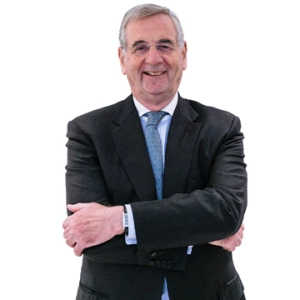
Fat Transfer to the face offers unparalleled benefits in facial rejuvenation. Not only does it provide natural-looking volume and contouring, but it also delivers long lasting results on a one time only intervention basis. We're seeing the popularity of this procedure grow rapidly as a result, with many patients preferring these more permanent treatments to well popularised temporary dermal filler equivalents.
Mr. Bryan Mayou
A state of the art, award winning clinic.
Founded in 2004 by world renowned plastic surgeon Mr Bryan Mayou, we now work with over 100 leading consultants and successfully treat over 20,000 patients each year. We have been winning industry awards since inception.
About Us
Best in Class Facilities
All of our treatments take place at our beautiful boutique premises in Chelsea. We have six consulting rooms and five operating rooms, as well as a dedicated pre and post-operative suite, and a full team of specialist nursing staff.
Our Clinic
A Strong Tradition of Innovation
We were founded in 2004 by world renown plastic surgeon Mr Bryan Mayou, best known for his pioneering work in the area of liposuction, lasers and microvascular surgery. We continue to collaborate with pioneers in our field.
Our History
At Home in Sloane Street, London
We are proud that our state of the art award-winning clinic is located in one of the best neighbourhoods in the country
Welcome to Sloane Street
Clinics Nationwide
We offer surgical consultations in London, Birmingham, Chelmsford and Bristol, and attract international patients from all corners of the globe such as as the USA, the Middle East and Europe.
Get in Touch




